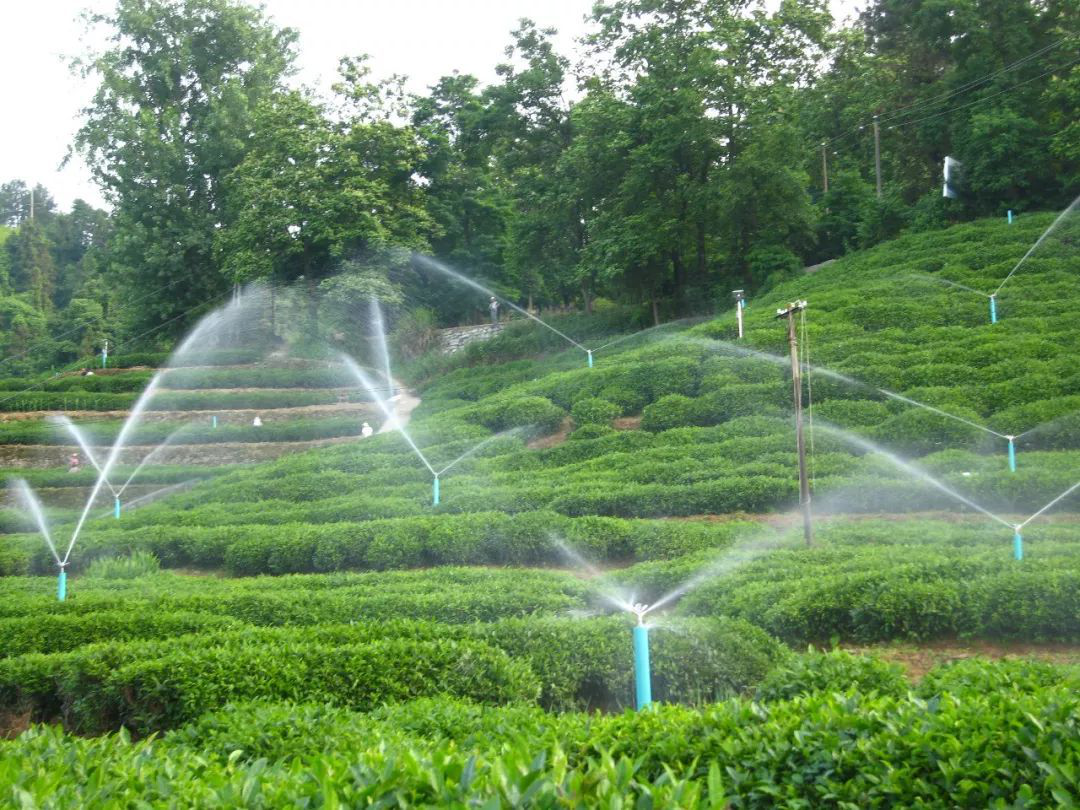Views: 0 Author: Site Editor Publish Time: 2025-03-26 Origin: Site
Sprinkler irrigation technology, as a core irrigation method in modern agriculture and horticulture, achieves precise water control by simulating natural rainfall, taking into account both efficiency and sustainability. This article will systematically analyze the application and practice of sprinkler irrigation technology from dimensions such as sprinkler types, applicable scenarios, and water-saving advantages.

Type | Characteristics | Applicable Scenarios |
Pop-Up Sprinkler | Concealed design, pops up during irrigation (height 2–12 inches), reducing mechanical damage | Lawns, gardens, golf courses |
Impact Sprinkler | Driven to rotate by the impact of water flow, with a large coverage radius (20–40 meters) and strong durability | Large-scale farmland agriculture, sports fields |
Gear Drive Sprinkler | Internal gear transmission, low noise, stable rotation | Residential lawns, public green spaces |
Micro Sprinkler | Low-pressure atomized spraying (spray range 1–5 meters), highly water-saving | Greenhouses, potted plants, fruit tree irrigation |
Rotary Sprinkler | Multiple nozzles rotate, with high uniformity, and supports angle adjustment (0°–360°) | Medium-sized farmlands, garden partitions |
· Water Source and Pumping Station: Provides a stable water pressure (standard 20–30 PSI, only 5–15 PSI is required for micro sprinklers).
· Pipeline Network: The main water pipes (made of PVC/PE materials) should be buried at a depth adjusted according to the climate (≥30 centimeters in cold regions).
· Smart Controller: Supports WiFi remote control and automatically adjusts the irrigation plan according to weather data (such as Rachio 3).
II. Scenario-based Applications: Differentiated Needs of Gardens and Agriculture
· Demand Characteristics:
· Aesthetic and Concealed: Pop-up or micro sprinklers are preferred to avoid damaging the landscape.
· Quiet Operation: The noise of gear drive sprinklers is ≤50 decibels, suitable for residential areas.
· Precise Irrigation: Adjustable angle (sector or full circle) and spray range (5–15 meters), suitable for flower beds and shrubs.
· Demand Characteristics:
· Large-area Coverage: An impact sprinkler can cover an area of ≥2 mu per unit, reducing the equipment density.
· Resistance to Harsh Environments: Stainless steel nozzles + ABS casing, resistant to sandstorms and ultraviolet rays.
· High-efficiency Water-saving: By evenly spraying, runoff is reduced, and the water utilization rate can reach 85% (only 40% for traditional surface irrigation).
III. Water-saving Technology: The Core Advantage of Sprinkler Irrigation Systems
1. Precise Water Control:
· Micro sprinklers can reduce evaporation losses, saving 30%–50% more water compared to traditional irrigation.
· The system is linked with soil moisture sensors to start and stop irrigation as needed.
2. Intelligent Management:
· Zonal Control: Divide lawns and shrubs into zones and allocate water according to needs.
· Rainfall Sensing: Automatically pauses irrigation during rainfall to avoid over-irrigation.
3. Resource Reuse:
· Use reclaimed water (after filtration) for sprinkler irrigation to reduce freshwater consumption.
IV. Cost and Maintenance Guide
2. Maintenance Key Points
· Regular Inspection: Clean the filter screen monthly to prevent sand from blocking the nozzles.
· Winter Protection: Empty the water in the pipeline, or use freeze-proof sprinklers (such as Orbit Winterizer).
· Fault Handling:
· If the sprinkler does not rotate: Disassemble and lubricate the gears or replace the drive module.
· If the spray range is shortened: Adjust the pressure valve or replace the matching nozzle.
V. Future Trends: Intelligence and Sustainable Development
· AI Irrigation: Optimize the irrigation plan through satellite remote sensing and machine learning.
· Solar-driven: Use solar pumping stations in remote farmlands to reduce energy consumption.
· Integration of Water and Fertilizer: Integrate a fertilization module into the sprinkler irrigation system to improve resource utilization.
Conclusion
From family gardens to ten-thousand-mu farmlands, sprinkler irrigation systems achieve efficient use of water resources through diverse sprinkler types and intelligent control technologies. Selecting appropriate sprinklers (such as the quietness of gear drive sprinklers and the large coverage of impact sprinklers) and paying attention to system maintenance will significantly improve irrigation efficiency and crop yields. In the future, with the continuous innovation of water-saving technologies, sprinkler irrigation systems will play a more important role in global food security and ecological protection.
Take Action Now: Visit professional irrigation equipment suppliers to obtain customized sprinkler irrigation solutions and inject intelligence and vitality into your land!